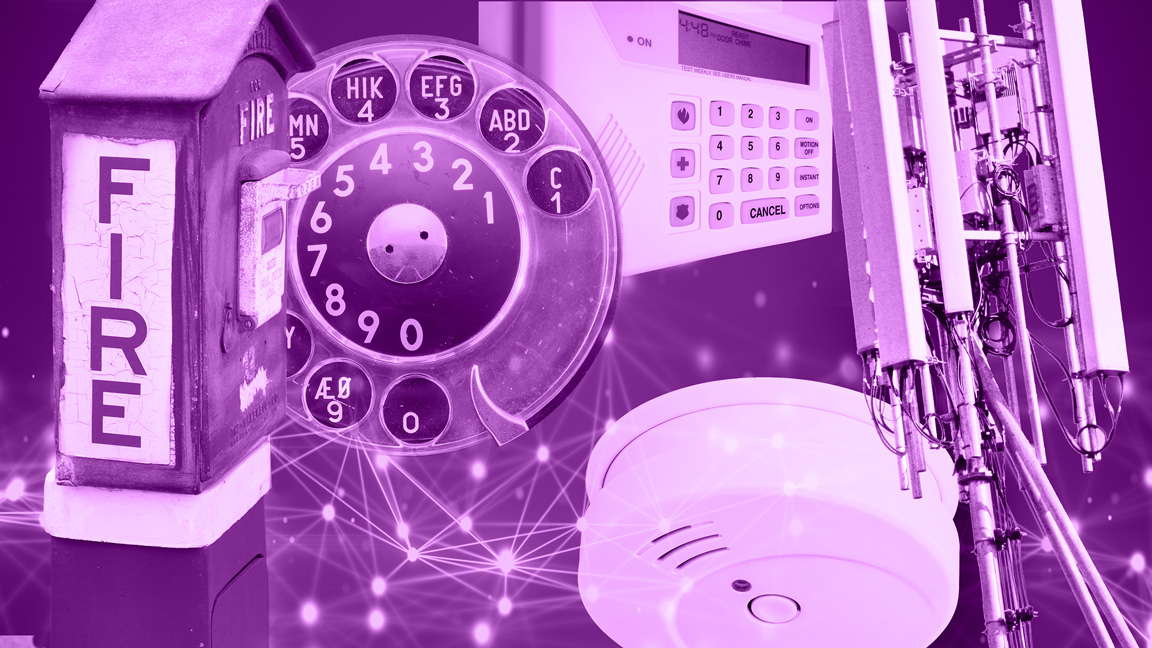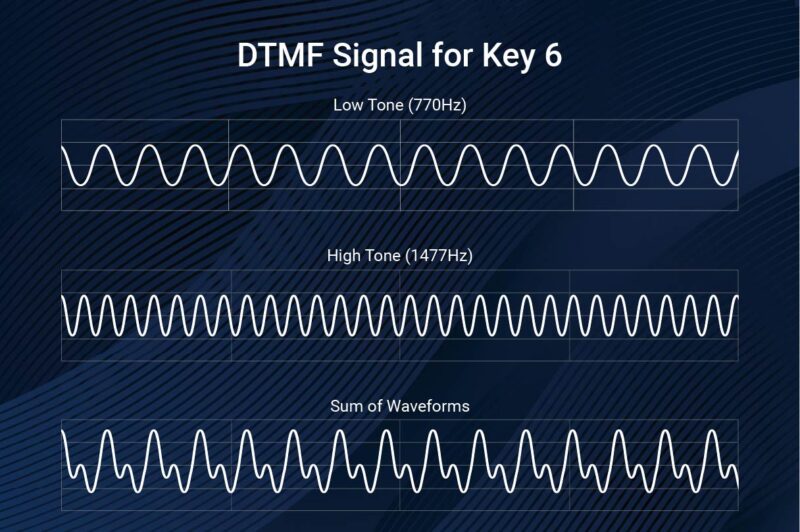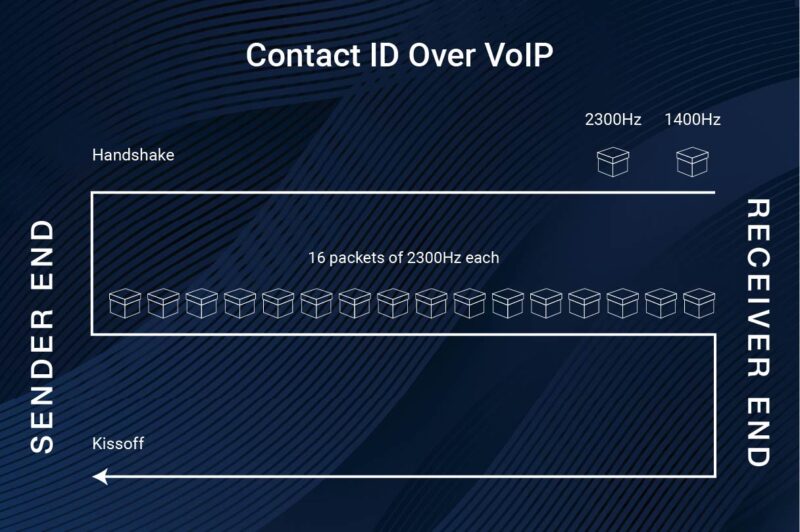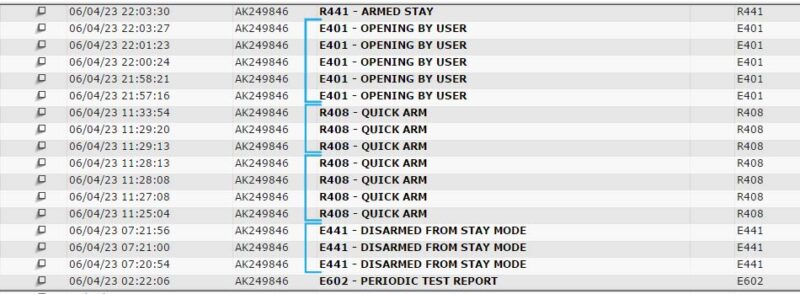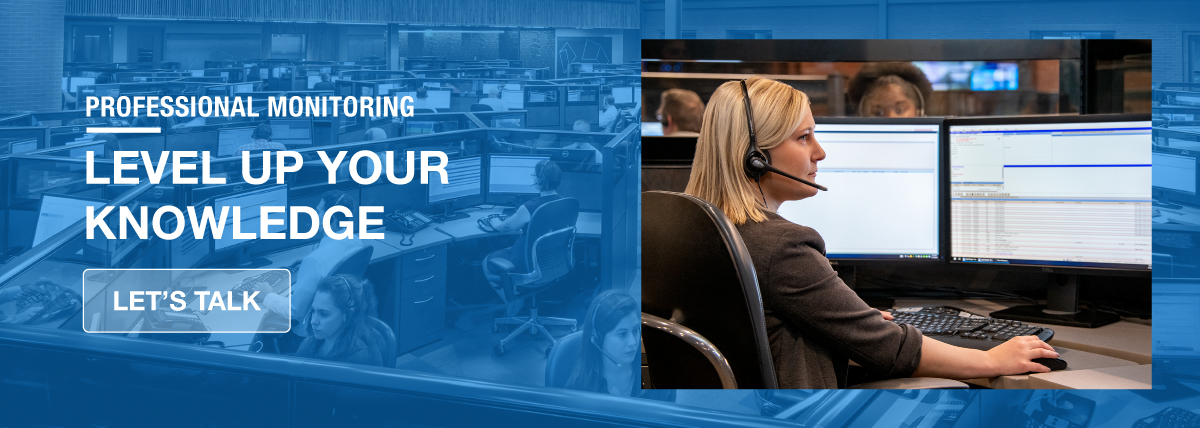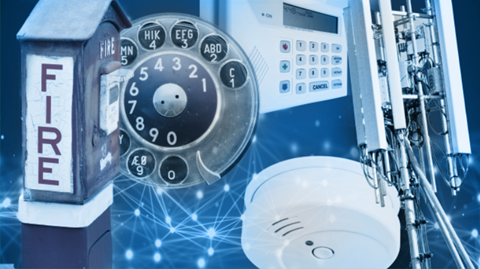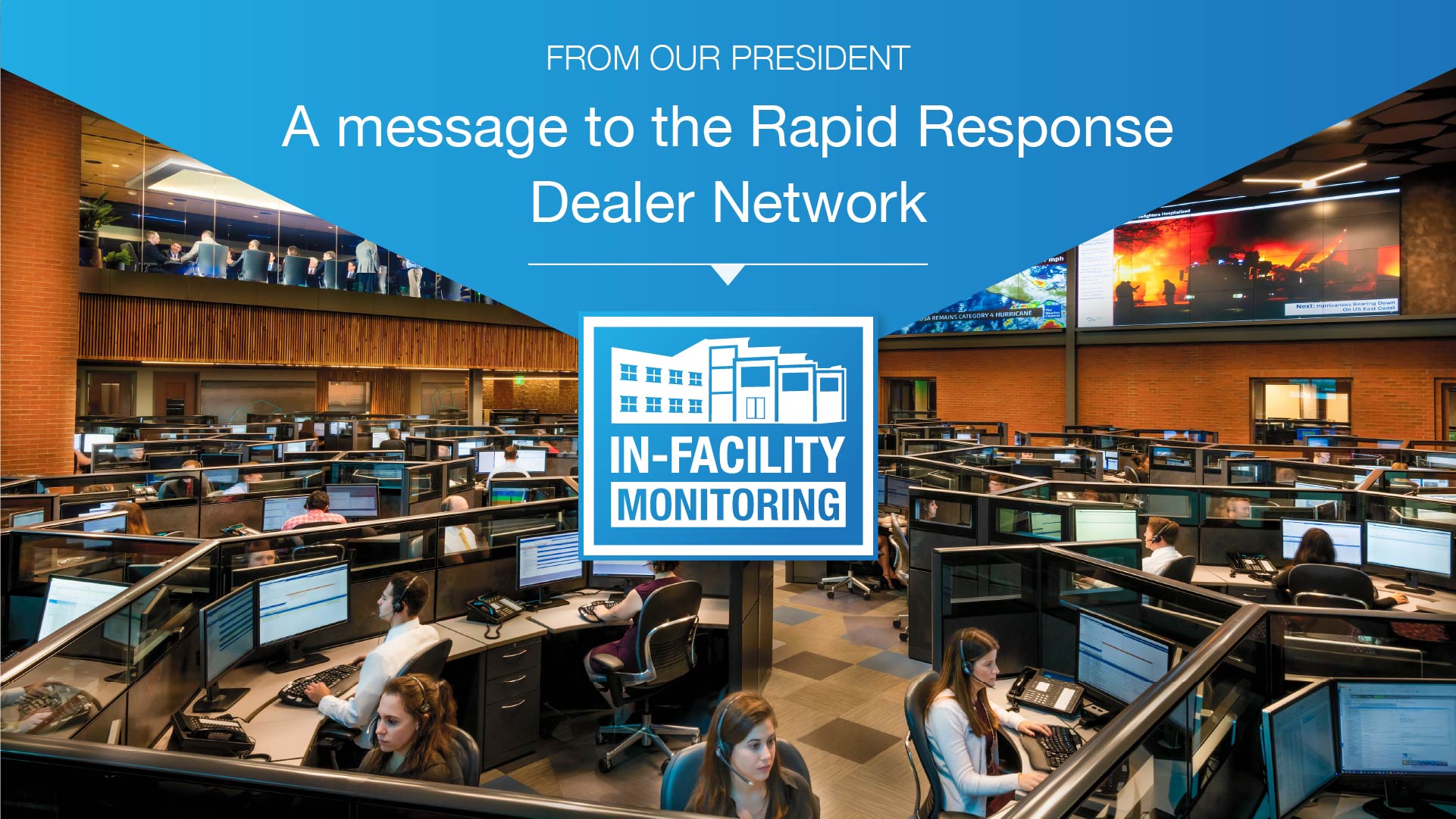In part 1, we covered the alarm communication methods and formats that laid the foundation of the professional monitoring industry. Central station alarm boxes, dedicated alarm circuits, dedicated wire connections, the expansion of the Public Switched Telephone Network (PSTN), pulse formats, to name a few.
In part 2, our focus is on the technologies that emerged roughly between the 1960s and the 2000s and took center stage: Dual-Tone Multi-Frequency (DTMF), Contact ID, SIA and Voice over Internet Protocol (VoIP). These technologies marked the beginning of automation, efficiency and reliability.
Be on the lookout for part 3, where we will cover modern communication methods, including Internet Protocol (IP) communication and cellular communication.
About the author — Darren Frick is a seasoned Sr. Systems Engineer with an impressive track record spanning over three decades. His career in the industry started at an early age, influenced by his father’s installation company and central station during the early 1980s.
Darren began working as a Monitoring Center Specialist before swiftly ascending to a supervisory role. His interest in innovation led him to explore the realms of receivers and telecommunications, where he now excels at managing transfers for a multitude of independent Dealers and companies that operate their own central station in addition to their installation business.
DTMF — Faster Communication and More Data
In 1963, Bell System, later acquired by what we now know as AT&T, introduced DTMF, a new and faster way to send alarm signals over phone lines.
DTMF, colloquially known as “touch-tone”, is a technology used by push-down phones and remembered by many for the fun sound it makes when pressing a number key. Each key emits 2 tones — hence its name — at specific frequencies that the receiver at the central station is programmed to decode into a command.
This opened the doors to automation. However, it wasn’t until the mid-1970s that DTMF was supported for alarm communication and cost-effective to allow widespread adoption.
Automation was a game changer, because now 16 digits could be sent in about 3 seconds. At first, old structures like 4×2 got their pulses replaced with DTMF tones, but more digits were added, and more zones could be represented. We got formats like:
- Ademco High-Speed: A format that consists of 4-digit account numbers, 8-digit messages and a 1-digit Channel Status code.
- Ademco Express: A format that consists of 4-digit account codes and 1 or 2-digit alarm codes. The format includes a checksum, a format identifier, and a digit set.
- Sescoa: A format that consists of 4-digit account codes and 2-digit alarm codes.
Contact ID — A Major Advancement in Alarm Communication
The ultimate use of DTMF was found in Ademco Contact ID in the 1980s. It included a ton of information from very complex alarm systems that had lots of features and zones, and could deliver it all in 3 seconds using 16 digits. Some panel makers even sped up the Bell Telephone-defined standards to squeeze the time down to 2 seconds. Ademco was one of the largest players in the industry at the time, making both receivers and alarm panels of all sizes, and being an excellent format in terms of speed, information size, and reliability.
Contact ID became a major standard. The Contact ID code contains 16 digits as follows:
0-3: Account number
4-5: Message type
6: Event qualifier (new event, restoral, status report)
7-9: Event code
10-11: Group/Partition number
12-14: Zone number
15: Checksum
Almost all other panel and receiver makers adopted this format during the 80’s and 90’s and even use it to this day.
The Contact ID format got formalized by the Security Industry Association (SIA) and published as “DC-05 Ademco Contact ID Protocol for Alarm Systems” so panel and receiver makers could follow the same event codes and the timing of digits.
Communication Process of Contact ID Protocol
When an alarm event is triggered, the alarm system opens the phone line and waits for a dial tone. When a dial tone is received, the alarm panel dials the number of the central station. The central station receives the call, waits for one second, and then sends the Contact ID handshake. The handshake is made of 100 milliseconds (ms) of 1400Hz pure-tone, followed by 100ms of silence, and 100ms of 2300Hz pure-tone.
250ms after that, the alarm sends the Contact ID message (16 DTMF digits). Each digit is 50ms long, and separated with 50ms silence.
After a successful reception of a message, the central station sends a kissoff signal. This is 800ms of 1400Hz pure tone. If the alarm system does not receive the kissoff tone in time, it re-sends the message.
Here is what a successful Contact ID transmission sounds like:
From Analog to Digital: The Emergence of VoIP for Alarm Communication
VoIP is a technology that allows the transmission of voice and multimedia content over the internet. Instead of relying on traditional telephone lines, VoIP compresses voice signals into digital data packets and sends them over IP networks over limited bandwidth. On the receiving end, the data packet is decompressed and re-interpreted.
In our industry, VoIP gained significant traction during the 1990s due to its cost-effectiveness and scalability.
Evaluating the Pros and Cons of Contact ID Over VoIP
In due course, the industry transitioned towards transmitting DMTF tones over VoIP. As one can imagine, the meticulous precision demanded by receivers to decipher these tones, coupled with the compression needed for VoIP data transmission, posed a challenge.
There are several problems with using VoIP to send DTMF tones, specifically Contact ID. Some relate to timing, and some relate to the “digitization” process.
With traditional phone lines, time is measured very accurately by the phone company and on-premises telephony equipment. There are mechanisms to synchronize the time between on-site phone systems and the phone company.
On the other hand, VoIP, and the internet in general, is a “streaming” process, meaning sound is sampled, chopped into tiny files, compressed, and sent over the internet to be un-compressed and re-arranged at the destination.
This is all done fast, but it means that the files might not arrive in the order they were sent. For written files, like documents and web pages, this was not a problem. For “live” media like video and audio, this presented a problem because the alarm receiver received files with a “robotic” sound or choppiness.
The issue of sound quality was solved by reducing compression and increasing bandwidth, although more bandwidth equals more cost.
However, the out-of-order issue was harder to fix. While compression improves human-to-human communication, the same does not work well for alarm communication:
Human-to-human
- Compression: The use of “codecs” to compress the data means fewer bits are sent, and there is less chance of the files being received out of order. While a human can still understand a sentence even if small bits of information are missing, a receiver cannot.
- Buffering: The receiving end waits for a good number of bits to arrive, then assembles them in order before playing. People talking on the phone don’t mind or even notice that when they speak, the person at the other end doesn’t hear what they say until a second later. However, alarm panels and receivers are severely affected by minor delays.
Alarm communication
- Compression: Codecs and compression reduce the overall quality of the sound. With DTMF tones, this reduction of quality can make them so the receiving end can no longer tell what they are.
- Buffering: This is the major issue, as it impacts the protocol timeline, which confuses the receiver. Even with no compression, the receiving end still needs to wait and accumulate enough data before it can assemble and play it.
An example of buffering is as follows:
1. An alarm communicator dials the central station receiver and waits to hear a handshake tone.
2. The alarm receiver answers and sends the handshake tone. It expects to receive digits from the alarm panel after 2.5 seconds.
3. The alarm panel hears the handshake tone and sends the 16 digits. Then it expects to hear the kissoff tone from the receiver. If it doesn’t hear it after 1 second, it presumes that the receiver was unable to decode the message, so it resends the message and waits.
4. The message can be re-sent up to 3 times, and if the alarm panel doesn’t get a kissoff in time, it will hang up and call back. The callback procedure varies based on panel makers, some may call back up to 8 times and others may not call back at all. If the alarm receiver keeps encountering this issue after multiple attempts, it will hang up and report a communication failure.
This buffering and delay create subsequent problems for alarms, Dealers, customers, and central stations.
1. Receiving the same signal multiple times for the same event: The scenario above results in the communicator re-sending the message. On the automation platform, the history would look like this:
2. Total signal failure or misinterpretation: Let’s say that the signal does go through. However, the tones were chopped up and gaps were introduced, so a DTMF tone may be heard as 2 or 3 tones. This means that the digits are wrong, and the checksum fails. Even in cases where no checksum is used, the account number might have a digit doubled, sending the signal to the wrong account, or creating the wrong kind of alarm (a medical emergency as opposed to fire).
Example: Account 1234, E130 Zone 001 might be heard as account 1123 E113 zone 000 – because the first “1” of the account number got doubled up, and all the other digits are essentially pushed over one digit.
3. Local trouble indications: A site can have an alarm panel with a trouble indicator, or a sounder indicating a communication problem. Then there are customers calling for service, technicians rolling trucks, etc. Very costly and embarrassing to the alarm company.
4. Runaway signals: The central station may call the alarm Dealer about these accounts telling them there are excessive signals. Many central stations have surcharge for these, which even if ultimately are credited, burn all kinds of time being dealt with and hurt the effectiveness of the monitoring service.
At Rapid Response, our SMART Team (Signal Management & Activity Reduction Team) monitors, tracks, and diagnoses the signal anomalies, including those mentioned above, to proactively address excessive signals.
SIA — The Modern Alarm Communication Format
During the 90s, another alarm format called SIA was introduced by Sur-Gard and standardized in the industry. It does not use DTMF tones, and instead uses pure tones more like a modem would. One of the big differentiators is that it uses event codes with both letters and numbers, so the events are much more human-friendly. As an example, “BA” is used to refer to burglary alarms, and “AT” is used for AC Trouble (power failure).
SIA also distinguishes itself by its resilience to compression. Unlike older formats, such as Contact ID on VoIP, which can suffer from signal distortion when subjected to data compression, SIA minimizes these issues. The simplicity and clarity of its tone-based communication make it a robust choice for alarm signal transmission, and often monitoring centers will recommend that SIA be used.
Its history of effective alarm communication has made it a preferred choice for many industry professionals, as it can significantly enhance the efficiency and accuracy of alarm monitoring and response.
However, not even SIA is immune to technical challenges. Alarm panels and receivers still rely on precise timing to initiate the handshake and kissoff. As a result, issues related to buffering and signal delays persist. In some cases, delays in the kissoff signal may lead to multiple signals being transmitted. Additionally, handshake signal delays can result in missed signals.
Despite these technical nuances, the SIA format remains a pivotal player in the world of alarm communication. Its clarity, user-friendliness, and resilience to compression continue to make it a highly effective method of communication.
The journey through communication methods has been one of innovation, challenges, and adaptation. As we continue diving into the history of alarm communication, part 3 will cover IP and cellular communication.
In this ongoing evolution, our industry continues to harness the power of innovation to provide efficient and reliable professional monitoring services for our Dealers and their customers.
